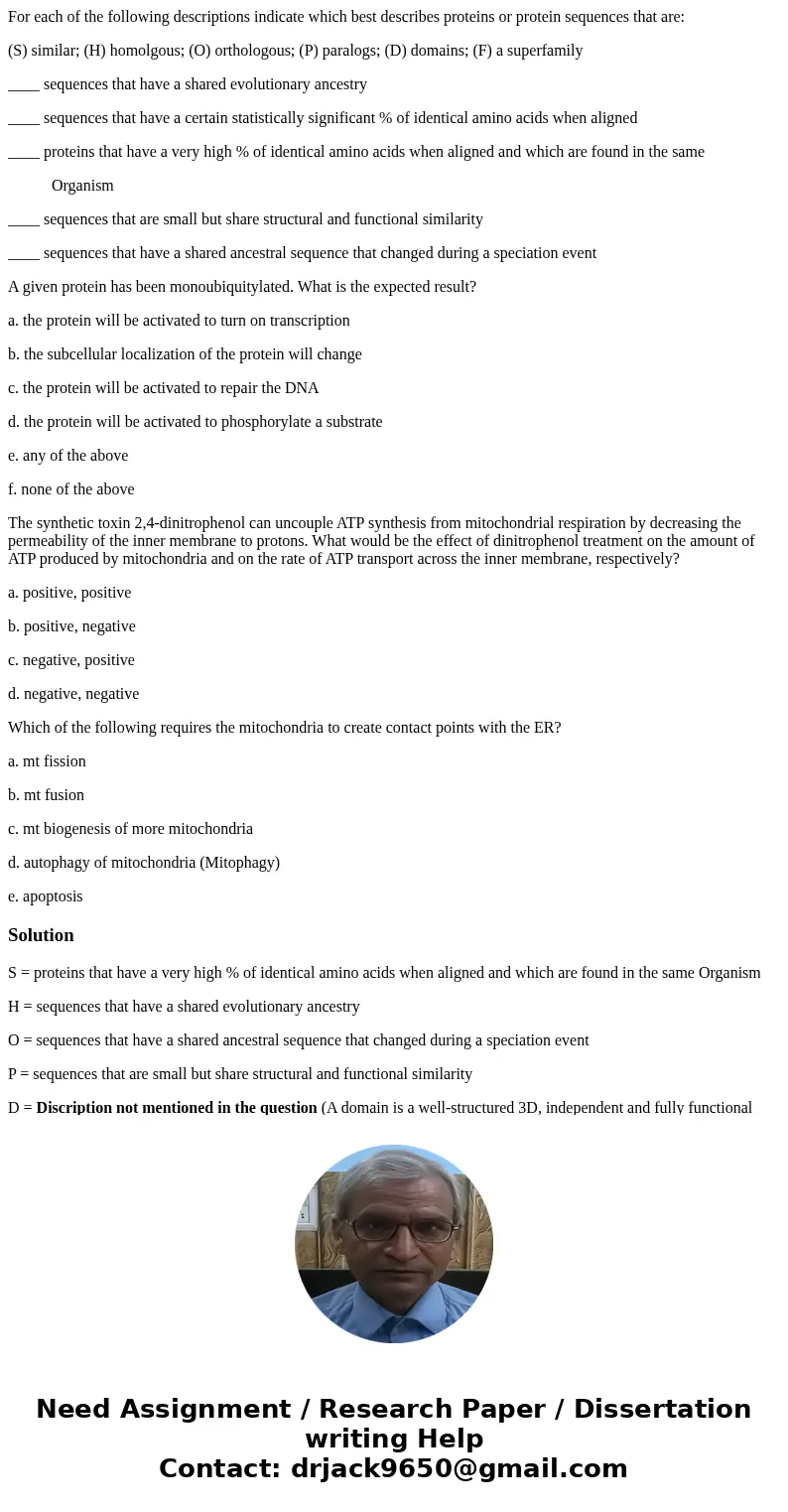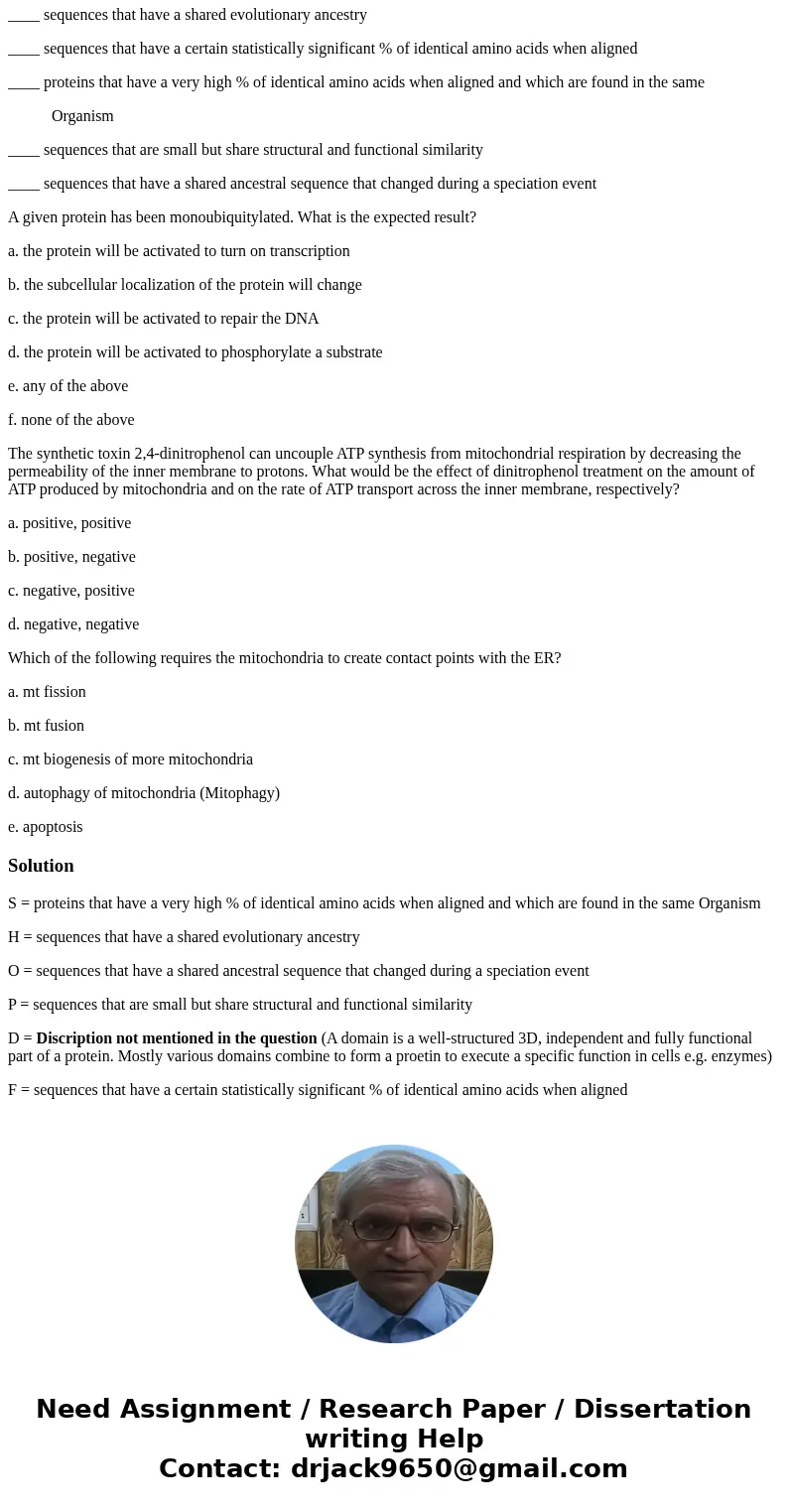For each of the following descriptions indicate which best d
For each of the following descriptions indicate which best describes proteins or protein sequences that are:
(S) similar; (H) homolgous; (O) orthologous; (P) paralogs; (D) domains; (F) a superfamily
____ sequences that have a shared evolutionary ancestry
____ sequences that have a certain statistically significant % of identical amino acids when aligned
____ proteins that have a very high % of identical amino acids when aligned and which are found in the same
Organism
____ sequences that are small but share structural and functional similarity
____ sequences that have a shared ancestral sequence that changed during a speciation event
A given protein has been monoubiquitylated. What is the expected result?
a. the protein will be activated to turn on transcription
b. the subcellular localization of the protein will change
c. the protein will be activated to repair the DNA
d. the protein will be activated to phosphorylate a substrate
e. any of the above
f. none of the above
The synthetic toxin 2,4-dinitrophenol can uncouple ATP synthesis from mitochondrial respiration by decreasing the permeability of the inner membrane to protons. What would be the effect of dinitrophenol treatment on the amount of ATP produced by mitochondria and on the rate of ATP transport across the inner membrane, respectively?
a. positive, positive
b. positive, negative
c. negative, positive
d. negative, negative
Which of the following requires the mitochondria to create contact points with the ER?
a. mt fission
b. mt fusion
c. mt biogenesis of more mitochondria
d. autophagy of mitochondria (Mitophagy)
e. apoptosis
Solution
S = proteins that have a very high % of identical amino acids when aligned and which are found in the same Organism
H = sequences that have a shared evolutionary ancestry
O = sequences that have a shared ancestral sequence that changed during a speciation event
P = sequences that are small but share structural and functional similarity
D = Discription not mentioned in the question (A domain is a well-structured 3D, independent and fully functional part of a protein. Mostly various domains combine to form a proetin to execute a specific function in cells e.g. enzymes)
F = sequences that have a certain statistically significant % of identical amino acids when aligned


 Homework Sourse
Homework Sourse